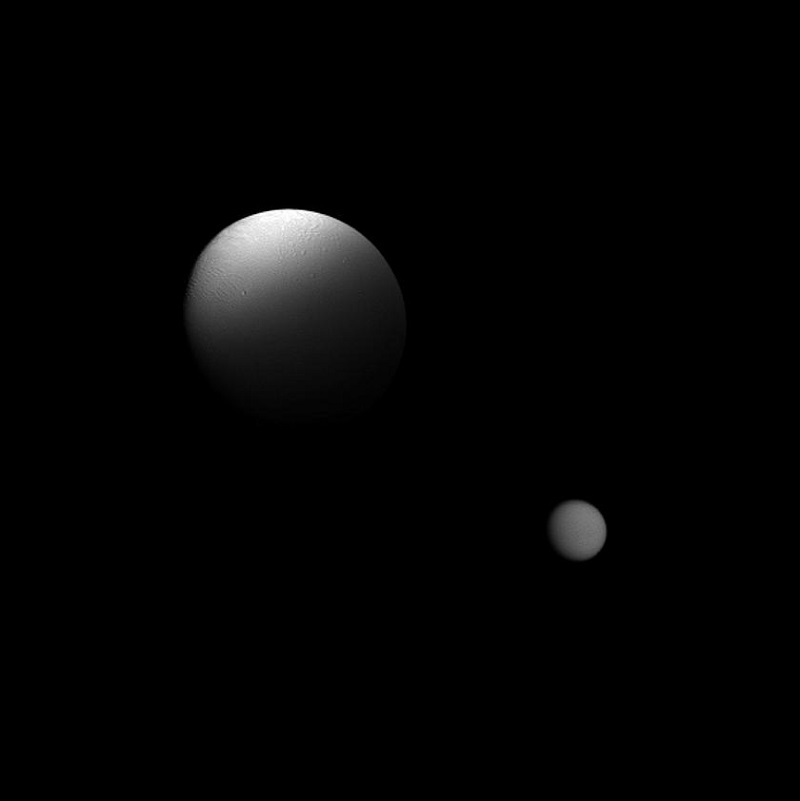NASA dixit:
“October 1, 2011. Saturn’s moon Enceladus is partially eclipsed by the planet in this Cassini spacecraft view which also features the moon Titan in the distance. Cassini flew by Enceladus, shown in the center of the view, at a distance of about 16,000 miles (26,000 kilometers). The terminator between the day and night sides of Enceladus (313 miles, or 504 kilometers across) can be seen on the far left of the moon, while the shadow of the eclipsing planet runs across the bottom.
Titan (3,200 miles, or 5,150 kilometers across) is in the bottom right of this image and is about 684,000 miles (1.1 million kilometers) from the spacecraft. This view looks toward the Saturn-facing sides of Enceladus and Titan. North is up. The image was taken in visible light with the Cassini spacecraft wide-angle camera on. The view was obtained at a Sun-Enceladus-spacecraft, or phase, angle of 29 degrees. Scale in the original image was 2 miles (3 kilometers) per pixel on Enceladus. The image was contrast enhanced and magnified by a factor of 1.5 to enhance the visibility of surface features.”
“After almost 20 years in space, NASA’s Cassini spacecraft begins the final chapter of its remarkable story of exploration: its Grand Finale. Between April and September 2017, Cassini will undertake a daring set of orbits that is, in many ways, like a whole new mission. Following a final close flyby of Saturn’s moon Titan, Cassini will leap over the planet’s icy rings and begin a series of 22 weekly dives between the planet and the rings.
No other mission has ever explored this unique region. What we learn from these final orbits will help to improve our understanding of how giant planets – and planetary systems everywhere – form and evolve.
On the final orbit, Cassini will plunge into Saturn’s atmosphere, sending back new and unique science to the very end. After losing contact with Earth, the spacecraft will burn up like a meteor, becoming part of the planet itself.
Cassini’s Grand Finale is about so much more than the spacecraft’s final dive into Saturn. That dramatic event is the capstone of six months of daring exploration and scientific discovery. And those six months are the thrilling final chapter in a historic 20-year journey.”
Image credit: NASA












 Subscribe to blog posts using RSS
Subscribe to blog posts using RSS










